This post may contain affiliate links which won’t change your price but will share some commission.
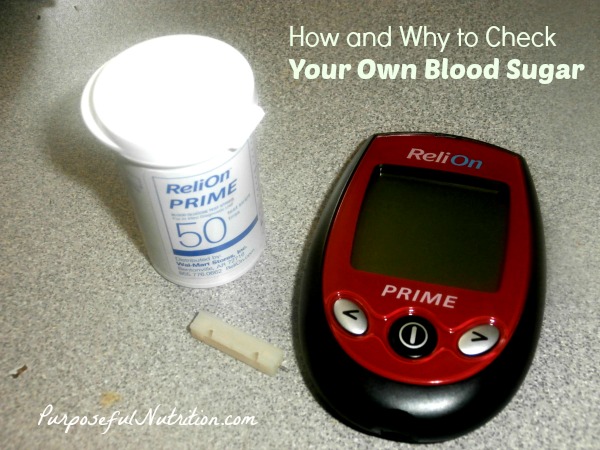
I have been checking my blood sugar for the past year and it has given me some really helpful information about how certain foods and eating patterns impact my blood sugar levels. I recommend this for anyone, especially since you can now buy a glucometer for $10 to $20 and can buy the glucometer strips for $15-$25/50 strips. Pretty affordable for some very helpful information.
I bought a ReliOn Prime at Walmart for $9.99. The bottle of strips to go with it was about $9.99 as well. I have the lancets already on hand, but they are not expensive either.
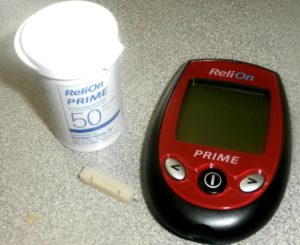
This is one of the strips with the end showing that goes into the meter.
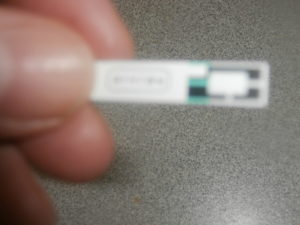
Once the strip is inserted it will look like the image below.
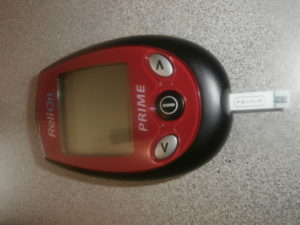
Then it is time to prick my finger with a lancet. It is important to wash your hands first with soap and water as this can greatly affect the numbers you get on your meter.
I don’t bother with the fancy things that you can put the lancet in to prick a finger. I just jab and wait for the blood to come. Sometimes it requires a squeeze or two to get it out.
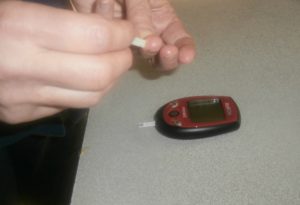
Once I have a nice drop of blood I hold the strip up to the blood and let the strip draw the blood up into the center. In the old days we would put a drop of blood on top of the strip, but no more. Now it functions like a pipette drawing up a liquid.
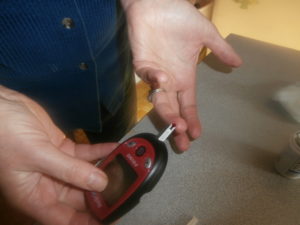
Then I wait about 5 seconds until the number pops up on the screen. 89 was a great fasting sugar that I had this morning. I am not always quite so low, so I love the days I get fasting sugars like this in the morning.
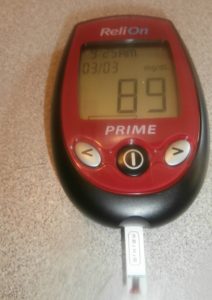
So that is it. Not too difficult. (And pricking the finger does get easier as you get used to it. Trust me on that one.)
I recommend that the average adult get one of these and at least check blood sugars periodically. My recommendation after research is that you want fasting blood sugars (before eating in the morning) to be below 100 and ideally in the 70’s and 80’s.
Another important time to check your blood sugar is 1-2 hours after meals. Again blood sugar should be below 120, but in a very healthy person with no insulin resistance, blood sugars will be below 100, even after a meal with a good amount of carbohydrates. At blood sugars above 120 there will start to be damage to tissues in the body. This is not something you want, but the current medical recommendations do not address blood sugars until they run much higher than this.
If you start to check your blood sugars and you coming up with numbers over 100, especially in a fasting sugar, I recommend you begin intermittent fasting and cut back on your carbohydrates and increase your fats for a LCHF diet. This will all help your body keep your insulin levels and blood sugars in a much safer place for your long term health. You can also join my Diabetes Prevention Program.
So, what is stopping you? Do you need a meter? Are you scared to poke your own finger? Do you not want to be bothered?
Don’t let these little excuses stop you from getting a simple and inexpensive way to take control of your own health. With this data you can change your health and your life. Share this with others who want to do the same.
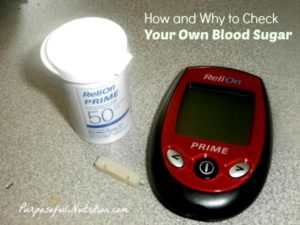

I just bought a meter and had a friend show me how to do this with my son. I’ve had some concerns about his health for well over a year and the pediatrician wouldn’t take me seriously (in spite of a LONG family history of both Type I, Type II, and my hypoglycemia). And even though you should never use a glucometer to “diagnose,” the doctor won’t do it so I figured that charting his blood sugar would give something quantifiable to refer back to with the doctor. Just started this!
Exactly why I think we should be doing this. Good for you. Another thing you might want to see if you can get is a HgbA1c, especially if his blood sugars concern you.
If blood sugar levels are in the ranges you recommend, are there still benefits to doing IF? Will it still lead to weight loss?
Yes it will still help with weight loss. And it will help keep blood sugar and insulin levels in healthy bounds.